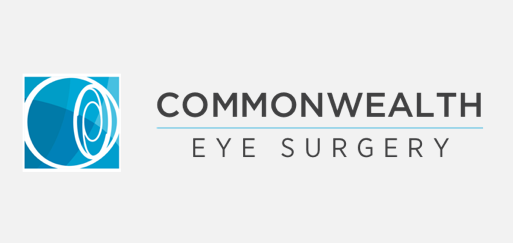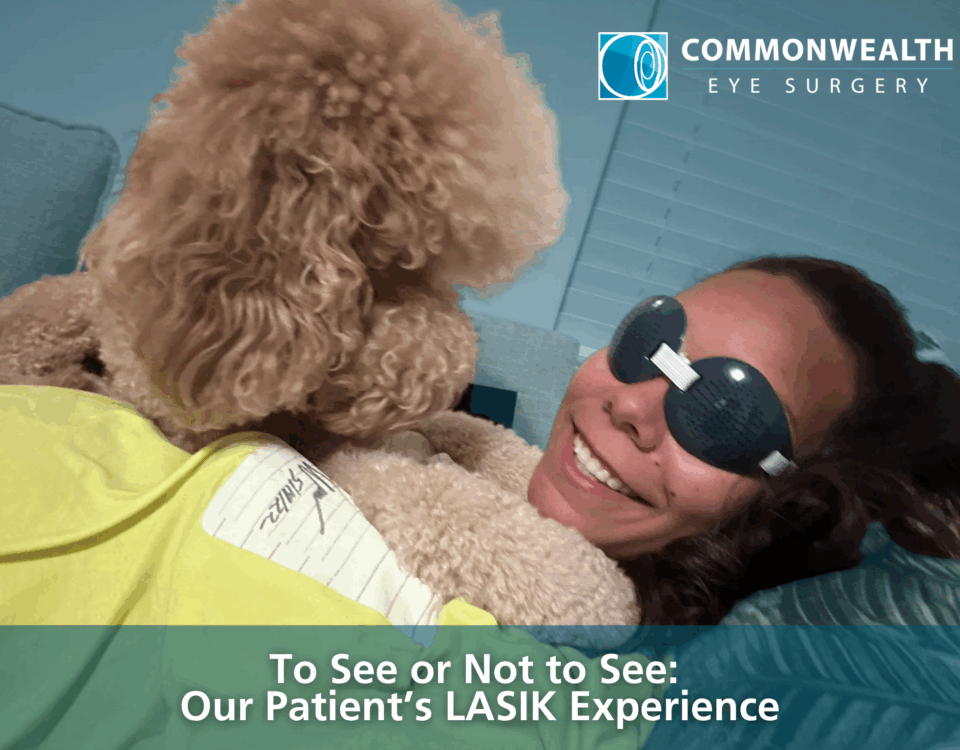
Yet Another Reason to Choose Dr. Lance S. Ferguson and Commonwealth Eye Surgery
August 13, 2011
Is LASIK Surgery Worth It?
August 17, 2011LASIK, LASEK, PRK, AST, SBK, RK, AK, LRI…LMNOP? Today’s medical consumer is lost in a maze of acronyms that confuse, rather than inform. Here’s a simple primer on refractive surgery.
All refractive surgery either changes the shape of the cornea (the clear window of tissue in front of your eye), or provides an implant. That’s it. By changing the shape of the cornea, or placing an implant inside the eye, doctors change the way light is bent, or refracted. Your family optometrist bends light through the use of glasses or contact lenses, and your prescription is often referred to as your “refraction”.
Implants work the same way contacts do, but are lower maintenance because they are placed inside the eye, and sometimes, inside the cornea. Your refraction is mathematically modified to determine the power of the implant. Your natural lens can be removed and replaced by an implant if you are over 55, but an implant can be placed over your lens if you are younger, and still have the ability to focus well at near.
We call this surgery refractive lensectomy, or RL, if we remove your natural lens. The procedure is identical to cataract surgery, and is performed using drop anesthesia alone (no shots) in about 5 to 7 minutes in an operating room.
If we implant an artificial lens in front of your natural lens, we call this ICL implantation. The ICL is short for implantable collamer lens, and is likewise performed in a similar time period in the operating room. This is a great option for those who are not candidates for standard laser refractive surgery.
Okay…so far we know we can change light by adding a surgically implanted appliance, but what about all these “initialisms” describing corneal refractive surgery.
We change the shape of the cornea in two ways…by weakening the corneal wall in specific areas, so it bends outward (incisional keratotomy), and by removing cornea tissue by the laser (ablation).
Incision keratotomy is delivered in two fashions – radial keratotomy (RK), and astigmatic keratotomy (AK). Both are performed in the operating room with drop anesthesia. RK flattens the central cornea, changing its shape to allow light to focus on the back of the eye. AK also flattens the cornea, but in only one direction – for example, in the 6 to 12 o’clock axis. By using a combination of these techniques, a surgeon can reshape your cornea, allowing good vision without spectacles or contact lenses.
AK is still used in combination with refractive lensectomy or cataract surgery, but RK is rarely used today, as the laser provides a great deal more accuracy.
How much more accuracy? Divide a meter into a thousand parts, and you have a millimeter. Divide that millimeter into a thousand parts, and you have a micron, one millionth of a meter. Divide that micron into four parts, and you have the depth of one laser pulse.
Modern laser surgery reshapes the cornea through a precise application of laser light to ablate (brake the molecular bonds) cornea tissue. There is no burning, but simply a process of cool vaporization.
The laser can be applied just under the epithelium (surface tissue) of the cornea, or by fashioning a flap on the superficial tissue of the cornea and performing the laser surgery at mid-corneal depth.
The latter procedure, LASIK, shortens the recovery time and is why it is so popular. LASIK is an acronym for laser assisted in-situ keratomileusis, a lot of words that mean little to a patient. There is minimal discomfort and visual improvement is dramatic. LASIK works well for not only near-sightedness, but also for far-sightedness and astigmatism.
LASIK, however, is not for everyone. Many individuals require a lot of tissue removal to achieve their goals and this requires going deeper into the cornea. If one has a large pupil, we need to increase the total area of treatment area, which also requires going deeper into the cornea. Likewise, if one has a “skinny” cornea, there may not be enough tissue left over to allow for a safe margin.
Remember, with LASIK we are already starting at the mid-corneal area, as we created the flap in the superficial area. If we go too deep, we risk destabilizing the cornea, leading to instability in the result, and long-term problems.
In this case, we can achieve our goals by starting the ablation at just under the surface of the cornea. This is the procedure referred to as PRK (photorefractive keratectomy). Usually, there is plenty of tissue if we do not create a flap. The downside is that we need to remove the superficial tissue (epithelium) to gain access to the laser site, and it takes about 5 days for this tissue to grow back. PRK patient usually see better the day following the procedure, but it looks hazier for a longer period of time, so they do not get the “WOW” factor that the LASIK patients do.
But the PRK patients have identical long term results. They just have to be “patient” longer (and hence the name). But the reward is the same, and PRK is a much safer option for many patients.
Finally, some patients have underlying conditions of the cornea, which cause the cornea to bulge over decades. These individuals should not undergo refractive surgery. These conditions, keratoconus, and pellucid marginal degeneration, can now be detected during the pre-operative consultation. Methods of early detection are a hot topic of research.
All of the alphabet soup in the title are simply variations on these two basic techniques. But you already have the basics.
Finally, what about “touch-ups”, or enhancements? Despite incredible accuracy, the variations in the way different humans heal introduce variance in the result. Enhancement rates differ depending on the surgeon, the laser, and environmental control. Those dedicated to providing the best to their patients spend hours and hours with computer programs (regression analyses) to increase accuracy. Unfortunately, many surgeons do not take these precautions, or don’t even know their enhancement rates, and quote a percentage that cannot be substantiated.
So look for integrity, safety, and accuracy. Check out fda.gov for information on different technologies. These sites have all the FDA data on the different lasers.
Talk to other eye doctors, and their patients. Ask them where they would take their family. And consider more than one evaluation. Do your homework, and you’ll “see the difference.”
Lance S. Ferguson, MD Surgical Director
Commonwealth Eye Surgery




